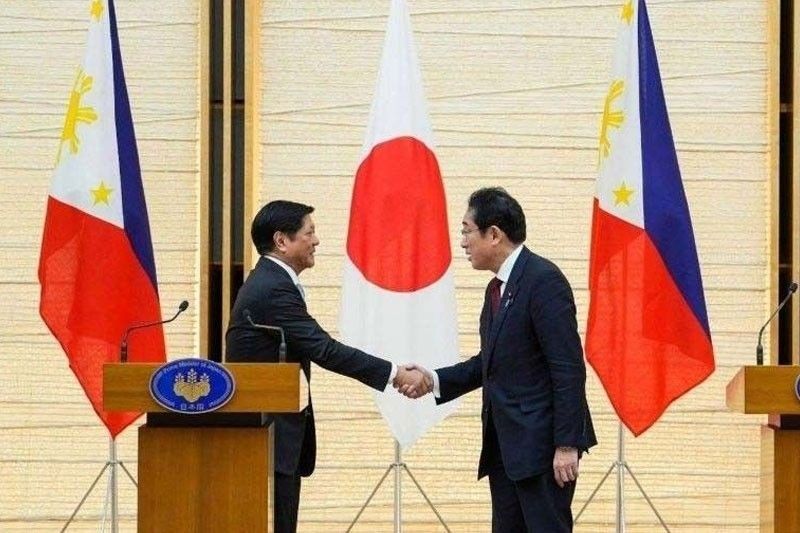Huge US, Japan investments coming
At least $100 billion in 5-10 years, says envoy WASHINGTON – At least $100 billion in investments from the US and Japan may come to the Philippines in five to 10 years as a result of the historic trilateral summit here that aims to deepen the three countries’ economic and defense ties, an envoy said […]


At least $100 billion in 5-10 years, says envoy
WASHINGTON – At least $100 billion in investments from the US and Japan may come to the Philippines in five to 10 years as a result of the historic trilateral summit here that aims to deepen the three countries’ economic and defense ties, an envoy said yesterday.
Philippine Ambassador to the US Jose Manuel Romualdez said among the sectors that may benefit from the investments are the semiconductor industry, which is part of the Philippines’ digital infrastructure, and energy.
“I’m afraid I don’t have the exact figure, but I can tell you that the figures I have been hearing… this may sound a little bit expanded in a way, but we’re talking about a hundred billion in investments in the next five to 10 years,” Romualdez said in a press briefing at the Philippine embassy here.
“Perhaps, even five years will probably be more appropriate because of the fact that we have a lot of areas where we are putting ourselves, our economic managers are putting our country into a situation where we’re opening up our economy especially in energy, which is very important for us, and also, of course, digital infrastructure, and physical infrastructure,” he added.
Romualdez said the figure is a conservative estimate, noting that the semiconductor industry is an $80 billion business in Southeast Asia. If the Philippines gets 10 or 20 percent of the pie, it would reap $8 billion to $16 billion worth of investments, he added.
“We are one of the seven countries that have been chosen by the United States as a place where we are a trusted ally,” Romualdez said.
“As you know, the semiconductor industry is going to be the wave of the future in terms of the technology that is going to be required for anything – for cars, for defense equipment and so forth, and so on. That is an indication of how much (investment can potentially come) to the Philippines,” he said.
Romualdez said the Philippines also has investments in the manufacturing sector and is finding ways to meet its energy needs. He added that energy exploration, which involves the West Philippine Sea, is “part and parcel” of what the government is looking at to bump up the country’s energy requirement, which is increasing every year.
“I think that in the next two years, our energy requirement for the country is going to be very high and so, I think, we’re trying to fast-track that as much as we can,” the envoy said.
“The more exciting part of the clean energy projects that we’re trying to lure into the country is the small modular nuclear power plants,” he added.
According to Romualdez, President Marcos is “quite excited” about a company that would supply small nuclear power plants, a source that he described as “perfect” for the country’s islands. He revealed that Marcos would meet with representatives from Ultra Safe, which he labeled as “one of the biggest contenders” into supplying the Philippines with a small modular nuclear power plant.
“It (small nuclear power plant) is much safer, it’s cleaner and at the same time it is very new technology,” the ambassador said.
In a separate press briefing, White House National Security Communications advisor John Kirby said US President Joe Biden, President Marcos and Japanese Prime Minister Fumio Kishida would announce new initiatives to accelerate and increase high quality infrastructure investment in the Philippines, enhance energy security, deepen maritime cooperation and strengthen partnerships on technology, and on cybersecurity.
“Our three countries embark on this new area of trilateral cooperation as trusted equal partners guided by shared values in an unwavering commitment to a free, open, peaceful and prosperous Indo-Pacific,” Kirby told reporters here.
The first trilateral summit of the leaders of the Philippines, Japan and the US is widely seen as an effort to counter China’s growing aggressiveness in the South China Sea, but officials claim the event is not directed at any country..
Trade agreements eyed
Aside from cooperation on investments, the Philippines is also hoping for a trilateral trade agreement with the US and Japan.
“Well, we’re hoping that that might happen,” Romualdez said when asked about the possibility of a trilateral trade deal among the three countries.
“Our trade department, headed by Secretary (Alfredo) Pascual, has been really looking into having a free trade agreement not only with the United States, but perhaps even with Japan. So, we’re looking at that seriously and we have been working together with our trade attaché here in pushing for specific free trade agreements.”
Romualdez said the US is more inclined to go into specific sectors for free trade agreement, but the Indo-Pacific Economic Framework (IPEF) initiated by Washington, of which the Philippines is a founding member, is eyeing the inclusion of the entire Association of Southeast Asian Nations. He added that the Philippines and the US could work together on areas like digital technology and cyberspace.














